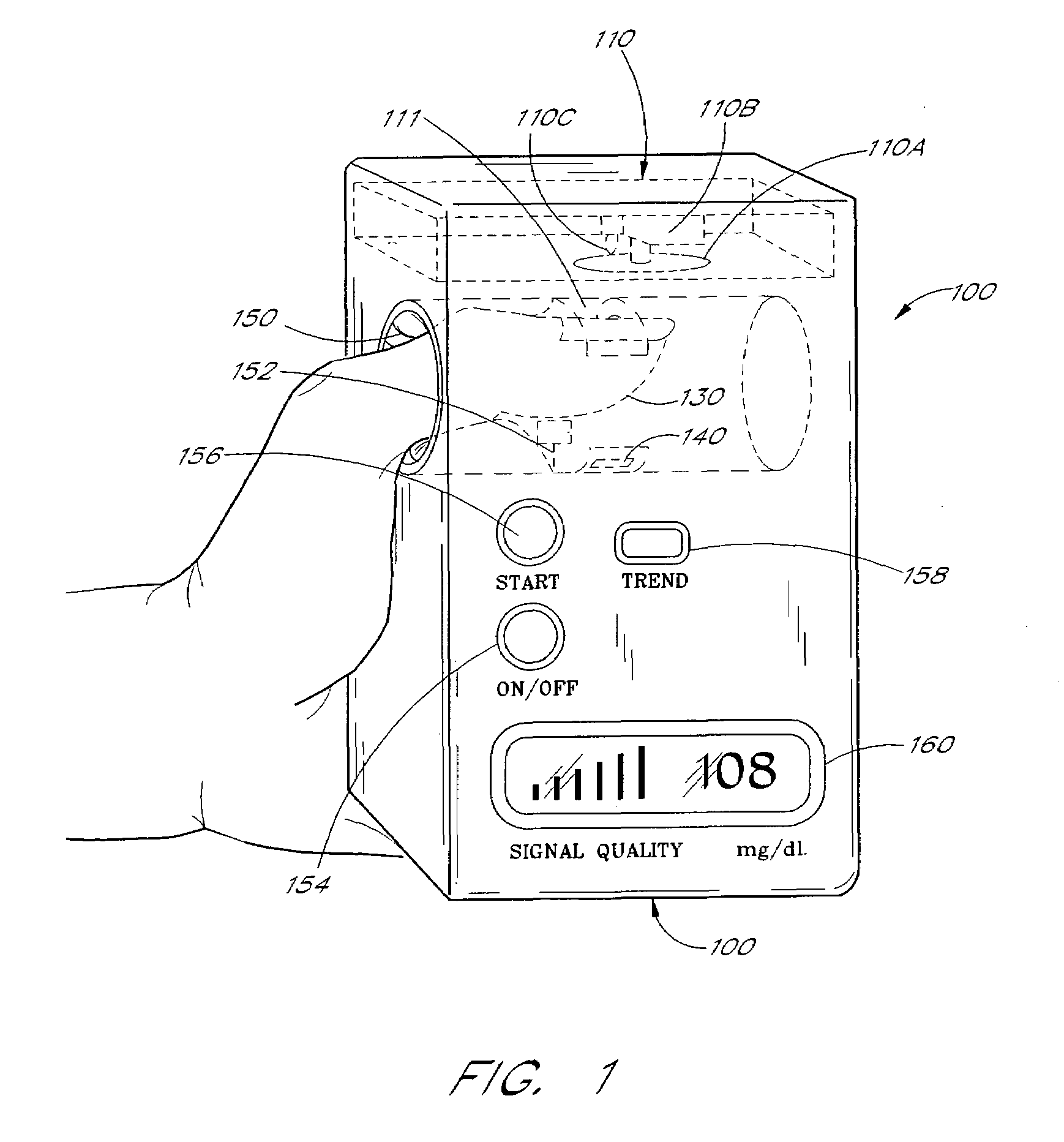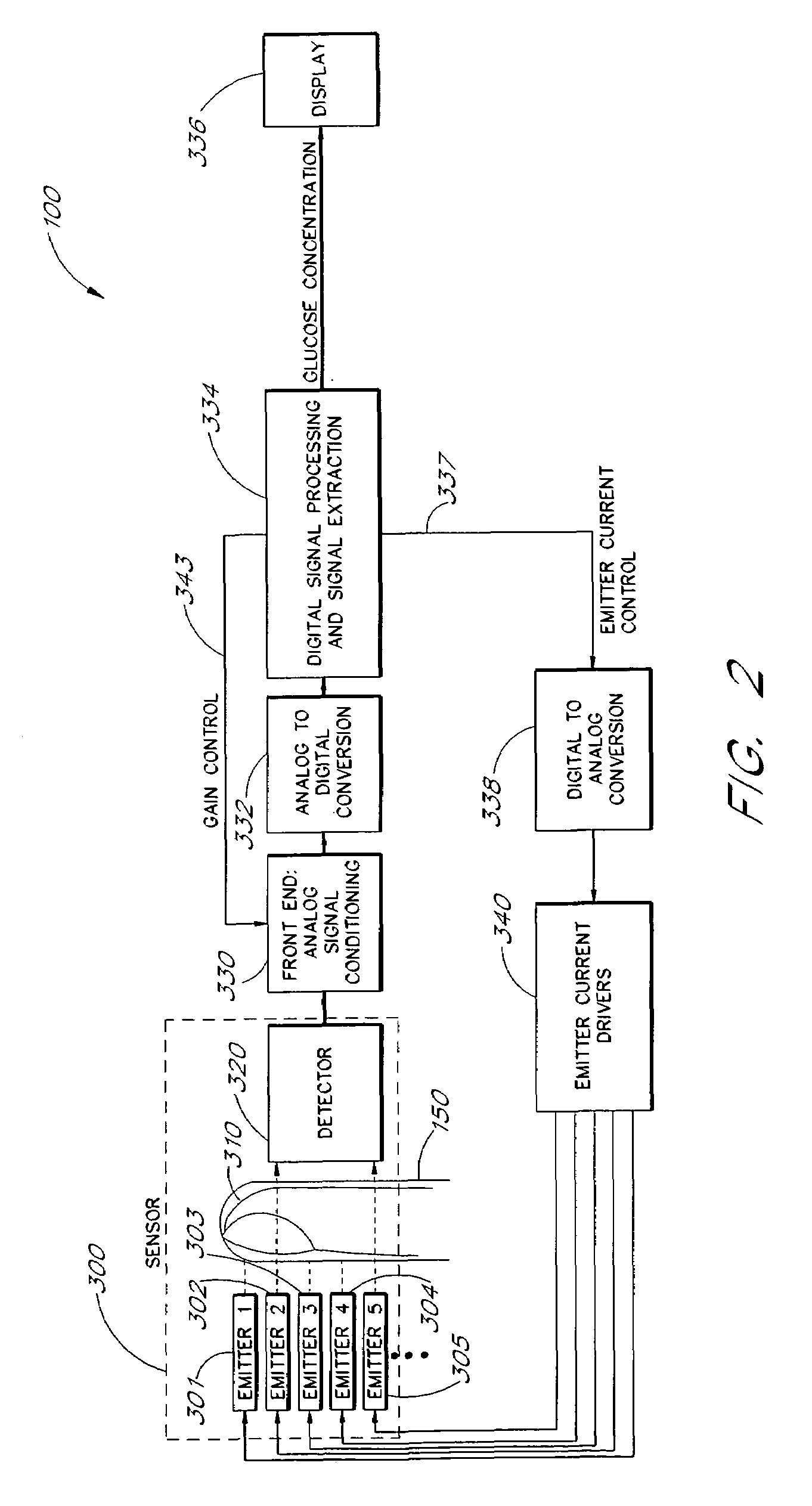Active pulse blood constituent monitoring
a technology of active pulse and blood constituent, which is applied in the field of non-invasive systems, can solve the problems of difficult to determine the path length through a medium such as a fingertip or earlobe, low signal strength, and inability to detect glucose concentration, and achieve the effect of obscuring the ability to determine the arterial oxygen saturation
- Summary
- Abstract
- Description
- Claims
- Application Information
AI Technical Summary
Benefits of technology
Problems solved by technology
Method used
Image
Examples
Embodiment Construction
[0045]FIG. 1 depicts one embodiment of a blood glucose monitor system 100 in accordance with the teachings of the present invention. The glucose monitor 100 of FIG. 1 has an emitter 110 such as light emitting diodes or a light with a filter wheel as disclosed in U.S. patent application Ser. No. 08 / 479,164 entitled Blood Glucose Monitoring System, filed on the same day as this application, and assigned to the assignee of this application, which application is incorporated by reference herein.
[0046]The filter wheel with a broadband light is depicted in FIG. 1. This arrangement comprises a filter wheel 110A, a motor 110B, and a broadband light source 110C. Advantageously, this unit can be made relatively inexpensively as a replaceable unit. The filter wheel is advantageously made in accordance with U.S. patent application Ser. No. 08 / 486,798 entitled Optical Filter for Spectroscopic Measurement and Method of Producing the Optical Filter, filed on the same date as this application, and ...
PUM
 Login to View More
Login to View More Abstract
Description
Claims
Application Information
 Login to View More
Login to View More - R&D
- Intellectual Property
- Life Sciences
- Materials
- Tech Scout
- Unparalleled Data Quality
- Higher Quality Content
- 60% Fewer Hallucinations
Browse by: Latest US Patents, China's latest patents, Technical Efficacy Thesaurus, Application Domain, Technology Topic, Popular Technical Reports.
© 2025 PatSnap. All rights reserved.Legal|Privacy policy|Modern Slavery Act Transparency Statement|Sitemap|About US| Contact US: help@patsnap.com



